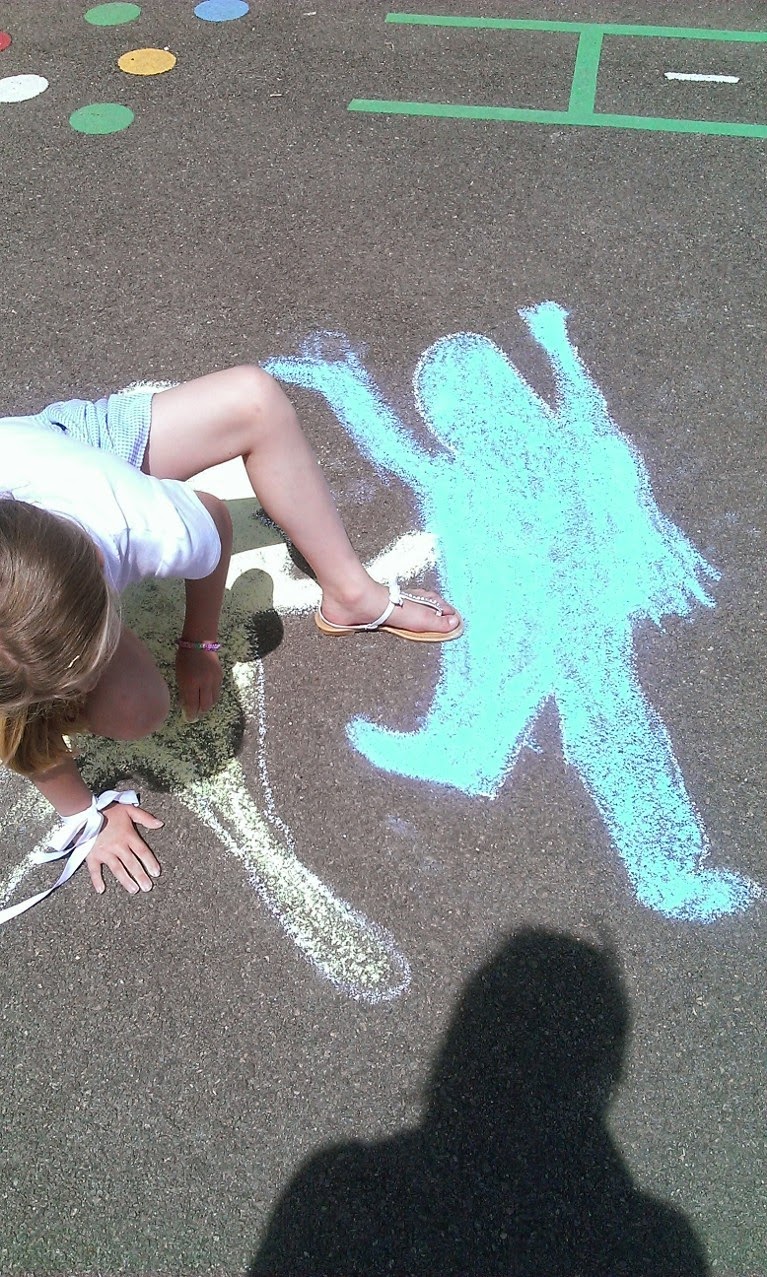Roald Dahl - Georges Marvellous Medicine.
Teaching the children about space in a picture can be tricky but I found combining it with the maths concept of symmetry can help.
Whilst studying, the great Roald Dahl Book, George's Marvellous Medicine the opportunity arose to cover space. I gave the children two pieces of paper (colour combinations of your choice). One has to be significantly small than the other. A simple piece of A4 and A3 would be fine.
We then drew shapes that would represent the story of George's Marvellous Medicine. You can really be creative with this maybe covering; lines getting the children to draw lots of different lines, shape geometric and organic or other occasional and topical representations. The world is really your oyster with this activity.
Be sure to tell the children to draw their shapes around the outer edge of their small piece of paper. Shapes drawn not touching the outer edge will
NOT work.
Next allow the children to cut out their shapes. The age of the children and their dexterity with scissors comes into play at this stage. If the children have drawn shapes that are intricate and they don't have advanced fine motor skills to cut out the shapes, they can find this stage difficult.
Once all the shapes have been cut out, place the smaller piece of paper in the centre of the larger piece and fix down with glue. Now ask the children to re assemble the piece of paper putting back the pieces they have cut out. This is normally when they can't find all their shapes and need to check under their chairs and tables for those pieces that have fallen on the floor.
After they have reassembles their puzzle, flip the shapes out again using the edge of the small piece of paper as a mirror line (this is where the symmetry and maths bit comes in). Hopefully the children will recognise that the shape and the whole it leaves are a reflection of its self.
If they do this all the way around their paper and fix the newly arranged pieces down with glue the results can be stunning. The examples shown were done by 7-8 year olds. You don't even need to use rectangular shapes pieces of paper just shapes with straight edges work best.












































.jpg)



